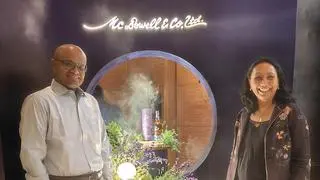It’s the end of June and my face still feels like it’s entering a furnace when I leave home for work in the afternoon. Being impatient, and afraid of getting inextricably tangled up in them, I don’t use scarves, gloves, dupattas and goggles to cover every bit of exposed skin. Nor do I use sunscreen any longer because it results in acne. But if you aren’t like me and do use it, have you made sense of the alphabet soup (SPF, PA, UVA and UVB) that goes with it?
A study by Consumer Voice magazine last summer of 12 sunscreen brands found that the SPF (sun protection factor) was the highest in Nivea (34.66) followed by VLCC (34.51) and Jovees (33.94), against the declared SPF of 30. So the PA (a unit indicating the protection grade of UVA) factor is considered to be higher for these brands.
If you are more than a casual consumer of sunscreens, there’s a good possibility you have wondered about the SPF strength of the samples on offer. They can range from as low as 2 to as high as 60. The numbers refer to the product’s ability to obstruct the rays that can burn. Consumer Voice explains that the SPF rating is calculated by comparing the amounts of time needed to produce sunburn on protected and unprotected skin.
However, a sunscreen’s effectiveness cannot be simply calculated as SPF strength x time taken for unprotected skin to burn. In addition to the time spent outdoors, the amount of exposure one receives is dependent upon other factors such as length of exposure, time of day, geographic location and weather conditions.
It’s also simplistic to assume that if you use a sunscreen with a high SPF, you can stay out longer in the sun. That will only bestow on you large doses of UVA radiation. Several studies assert that above SPF 50+ the extra protection is very small. UVA rays are long but can pass through clouds and glass. They can penetrate deep into the skin and can age you early, causing spots and wrinkles, and are increasingly seen as causing skin cancer. UVB rays cause sunburn but are blocked by glass.
Biotique was found to contain a negligible amount of SPF (2.01) against the claimed 30.
The boot star values are five stars each for Nivea, Neutrogena, Olay and Dabur. There are no stars for Ayur, Biotique, Jovees and Revlon. The boot star rating system is a proprietary in vitro method used to describe the ratio of UVA to UVB protection offered by sunscreen creams. The UK-based Boots Company had developed this method that has since been adopted by most companies marketing these products in that country. The lowest rating is three stars, the highest is five stars.
Nivea has the highest amount of total fatty substance (28.55followed by Jovees (21.85). Lotus (6.85) and Biotique (6.30) have the least amount of total fatty substance. TFM is an important component that keeps the skin glowing and prevents it from getting dry. The Indian Standard requirement is minimum five per cent. All the brands were comfortably above this level.
Photostability is a product’s ability to retain its efficacy upon exposure to UV rays. It is important that the product does not degrade with UV exposure as a photo-unstable product could leave users at risk of uncontrolled exposure. Jovees and Lacto Calamine showed very good results of photostability and got the highest scores. Dabur and Biotique were insoluble in water and hence not suitable for the photostability test.
In the sensory tests, Nivea (23.50/40) is the top scorer followed by Olay (23.09). Other brands tested included Lotus and Lakme.
The testing is primarily based on Indian Standard (IS: 6608 for skin creams). The other tests have been included based on the final draft international standard ISO/FDIS: 24443 and ISO/TC 217/WG 7 for determination of sun screen UVA/UVB photo protection and photostability, respectively, through in vitro method. Some parameters have been verified based on the specific claims of products.
Vitamin C is a weekly dose of consumer empowerment.








Comments
Comments have to be in English, and in full sentences. They cannot be abusive or personal. Please abide by our community guidelines for posting your comments.
We have migrated to a new commenting platform. If you are already a registered user of TheHindu Businessline and logged in, you may continue to engage with our articles. If you do not have an account please register and login to post comments. Users can access their older comments by logging into their accounts on Vuukle.